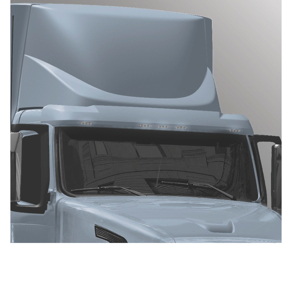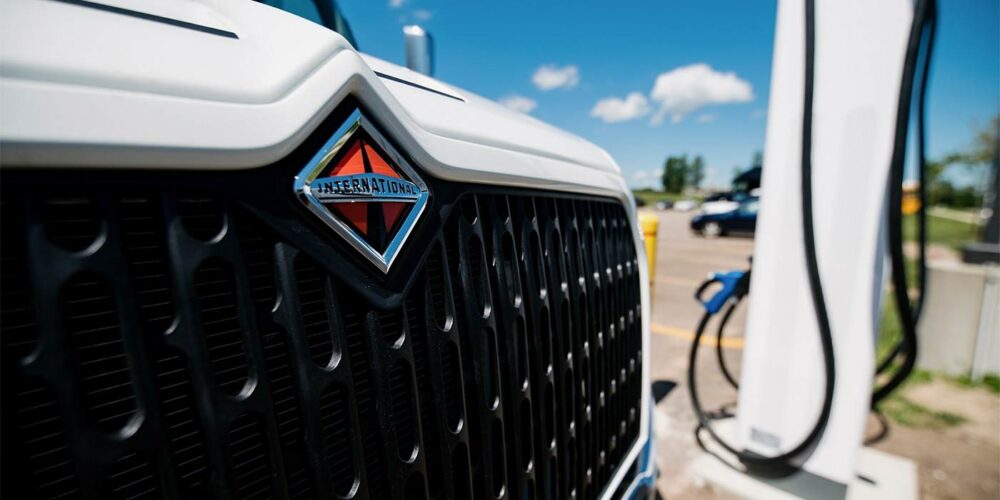
It has been nine years since the Environmental Protection Agency (EPA) launched the SmartWay program aimed at reducing transportation emissions by creating incentives to improve supply chain fuel efficiency. To give you some perspective, in 2004, George W. Bush defeated John Kerry in the presidential election, Athens, Greece, hosted the Summer Olympics and Fleet Equipment’s then-editor Tom Gelinas urged fleet managers to invest in technology such as rear obstacle sensing systems and auxiliary heating and cooling technology designed to eliminate the need for idling for interior climate control. So how far has the heavy-duty truck industry come?
“Since 2004, more than 3,000 SmartWay partners—including top trucking firms, owner operators and others—have eliminated 28 million metric tons of carbon dioxide [CO2], saved 65 million barrels of oil and $8.1 billion in fuel costs, by adopting cleaner and more efficient technologies and practices,” says Jim Blubaugh, deputy director of transportation and climate division at EPA. “That’s a significant impact of which we are proud.”
The EPA SmartWay program has offered a host of industry improvements over the years that go beyond the numbers such as serving as a neutral testing and assessment source that offers a cornucopia of information for fleet managers looking for data and information on technology performance, as well as providing a forum for trucking fleet owners and operators to share information about their experiences with these technologies, once they are out in the field.
For OEMs, it’s a partner that helps assure that fleet managers’ equipment needs meet certain EPA fuel economy goals, so that managers don’t have to rely solely on manufacturer claims. “For operators and fleets it’s an additional vote of confidence their vehicles will yield better fuel efficiency and meet or exceed goals set forth by the SmartWay program,” says Charles Cook, Peterbilt product marketing Segment Manager.
“In addition, [the SmartWay program] provides simple-to-follow technical specifications and requirements for equipping a tractor,” adds Wade Long, Volvo Trucks director of product marketing. “The program provides guidelines for tractors and trailers, and carriers can display the SmartWay logo on vehicles that meet these requirements. Having SmartWay-verified vehicles can help provide carriers a competitive advantage by proving to their customers they care about the environment.”
Good fleet managers know that the payoff with new technologies is in the long term, and as much as we all like to do our part to green-up our business practices, practical fleet decisions often come down to two things—meeting regulation requirements and the bottom line. The monetary impact is best seen in the fleet’s fuel costs.
“Fuel costs are now the single greatest expenditure for truckling firms, as compared to labor, equipment and maintenance. The EPA estimates that a SmartWay designated truck can save between 2,000 and 4,000 gal. of diesel fuel per year, and reduce CO2 emissions by 20%, as compared to similar Class 8 trucks on the road, which are not equipped with these technologies and features,” Blubaugh says. “This can be more than $15,000 per year in fuel savings, at today’s prices. The use of cleaner, more fuel efficient vehicles and equipment can be a key strategy for fleets that have their eye on the bottom line—as well as sustaining a robust trucking industry well into the future.”
It will probably come as no surprise then that one of the most popular SmartWay product segments is aerodynamic drag-reducing technologies for both the tractor and trailer. Engine idle reduction tech and fuel-efficient tires are just as popular when it comes to maximizing fleet efficiency. The proof is in the numbers—Freightliner Cascadia Evolution, one of the most aerodynamic trucks has received more than 15,000 orders since the start of production this past March.
It all comes down to driving more miles and using less fuel. Demand for forward-thinking efficient technologies is prompting OEMs to think beyond the common tech. Volvo, for example, incorporates a “stop-light” measurement performance tool in the electronic databook. The tool provides customers a best (green +), good (green), medium (yellow) and none (red) rating of the options that affect aerodynamics and fuel efficiency. Fleet managers can quickly review their vehicle specifications and determine the rating of the components they specify.
For Peterbilt’s part, its PACCAR lineup of engines are driving fuel economy savings and its newest SmartWay-certified, on-highway vehicle, Model 579, puts the emphasis on aerodynamic design and fuel-saving spec’ing options.
“Each customer has a unique set of business needs and there are a wide range of spec requirements and preferences,” Cook says. “Through our dealer network, we work closely with all customers to help them build the most fuel efficient vehicle possible while also meeting all other considerations. Gaining the highest levels of fuel efficiency is really about having a strong partnership and comprehensive discussion with customers to find the best vehicle and the best components and systems.”
More unique technologies are on their way. Just take a look at Navistar’s concept vehicle called Project Horizon, unveiled in March. Navistar introduced an active shutter grille that incorporates dynamic grille bars that open and close based on cooling demands to reduce aerodynamic drag by creating the right balance between the air entering the cooling module and traveling around the vehicle.
Across industry as a whole, the EPA has seen wide adoption of each of these technologies. Some fleets invest in all of them as a package. So after nine years of success and a growing list of SmartWay partners, what does the EPA see coming down the pike?
“We expect all to continue to grow in demand as energy prices increase and shippers and carriers of freight continue to look for new ways to reduce their carbon footprint and become more competitive,” Blubaugh says. “The EPA closely collaborates with its partners to identify other promising technology areas … . The EPA encourages its partners to provide feedback to us on their experience with these products and vehicles, so we can continue to refine our test methods and technology verification program, in order to offer our partner companies the best available technical assistance that we can.”














